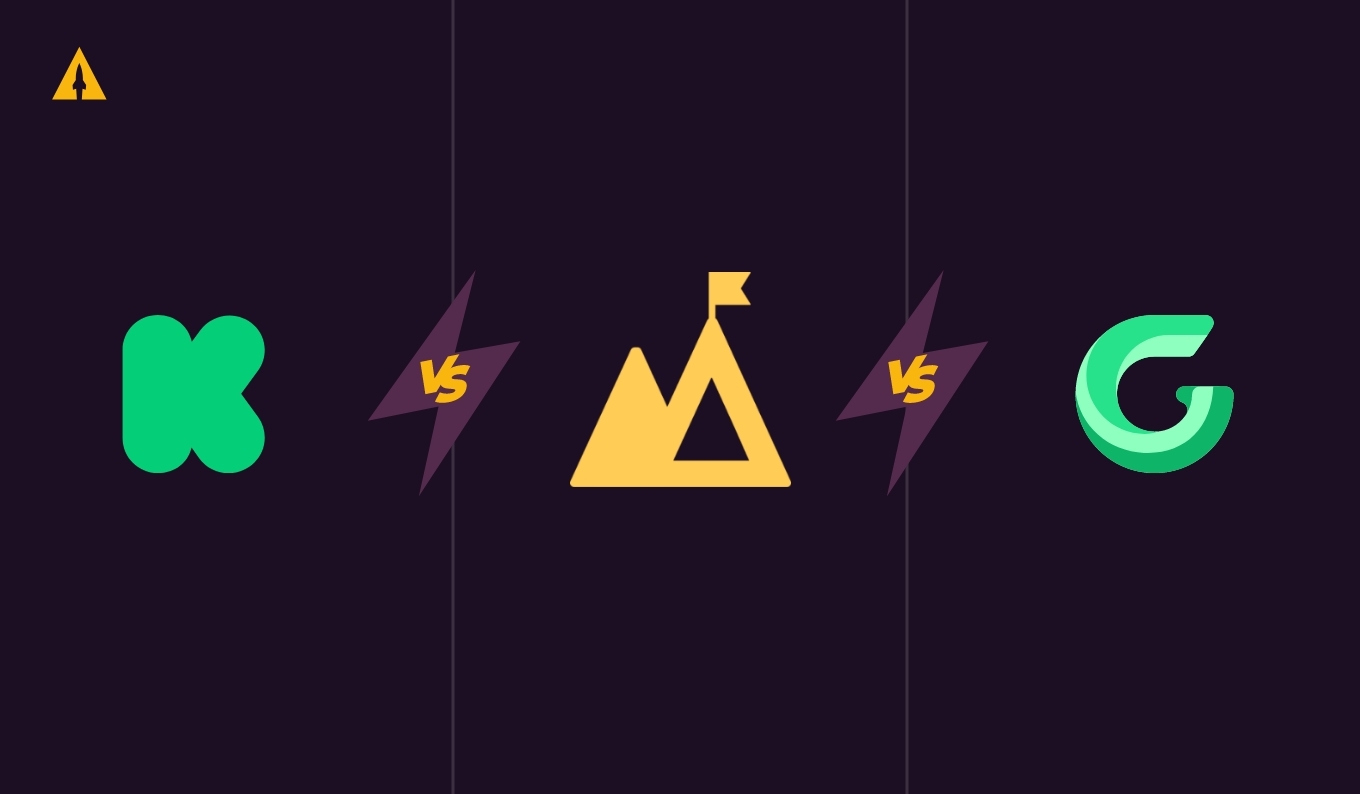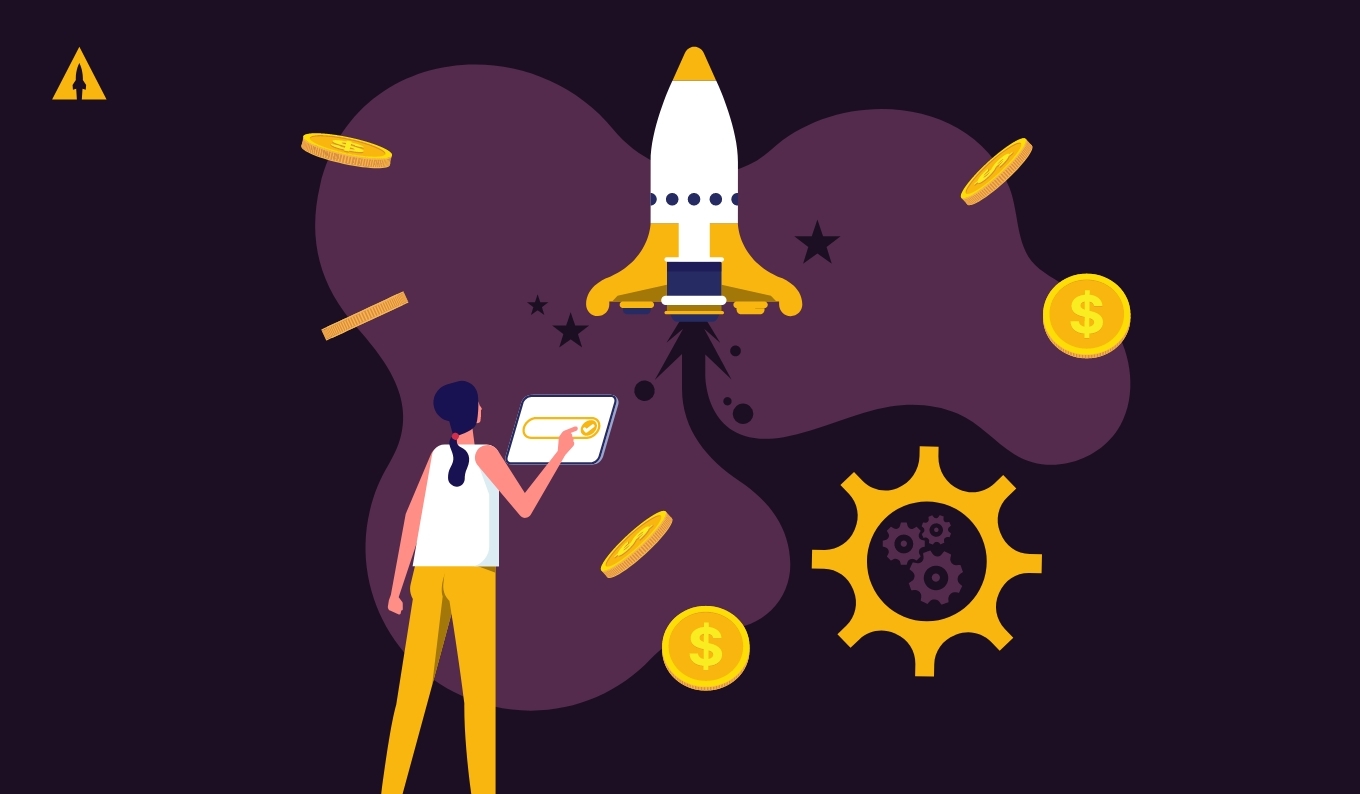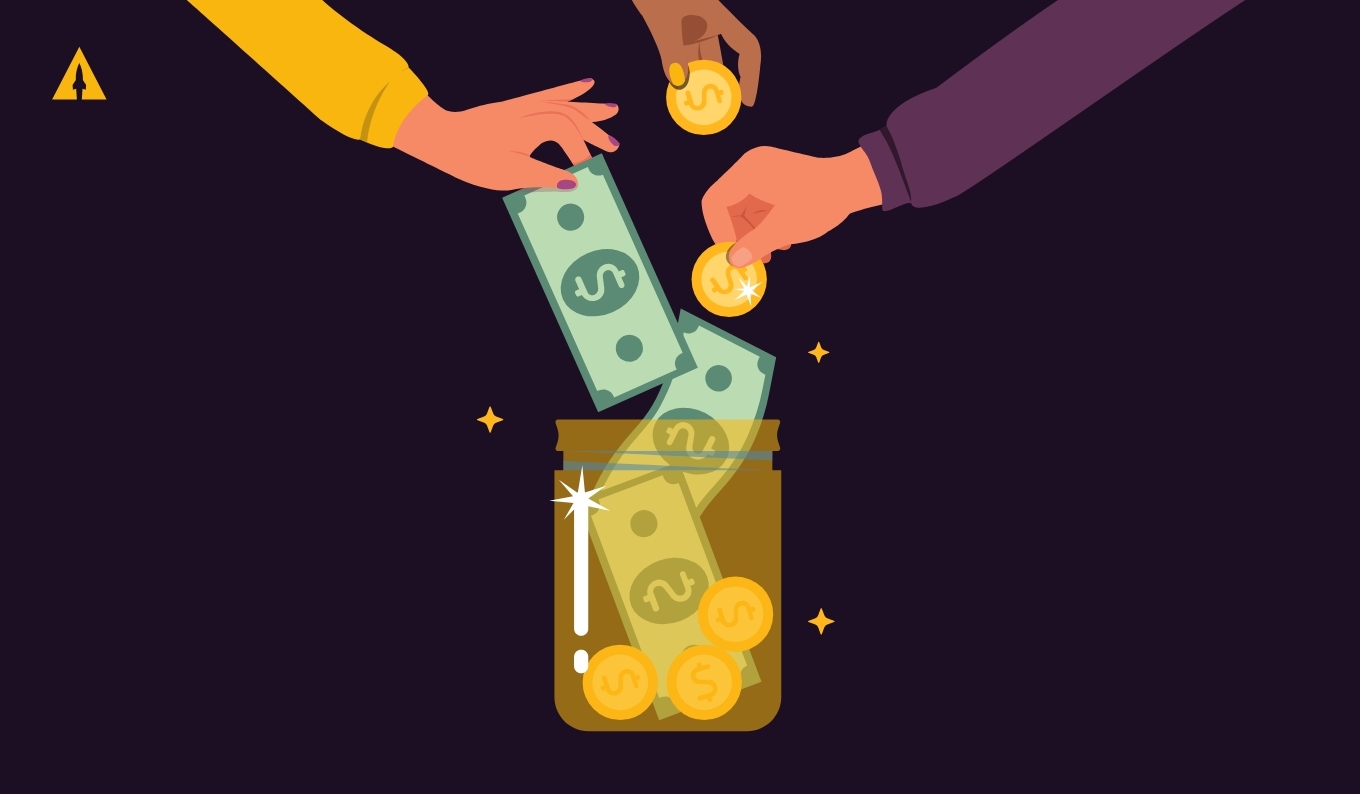
So you’ve made an awesome product… check. And you’ve decided on Kickstarter as well… another check. But how do you actually get people to back your campaign?
Well I have 17 tips to answer that question. And these tips aren’t theoretical concepts or wishful thinking. They’re battle-tested approaches my team at LaunchBoom has used to help creators raise over $175 million across hundreds of successful campaigns in the last year alone.
Throughout this guide, I’ll share real experiences from clients like Fuse Audio GLD who raised $631,249, Quest Snakes who raised $148,468, and ChillShark who raised $386,213 – showing you exactly how these strategies translate into actual backing.
Contents
Key Takeaways
Before diving deep, here’s the main takeaways:
- Building a pre-launch email list isn’t just important—it’s essential, but converting subscribers to $1 VIPs creates a foundation of committed backers
- Advertising on Meta (Facebook & Instagram) typically drives the majority of successful campaign traffic
- Kickstarter’s own ecosystem can contribute up to 30% of your funding when you leverage the platform effectively
- Don’t be afraid to leave the digital world behind and start marketing your product in-person
Here’s How to Get Backers On Kickstarter
These 17 strategies cover everything from pre-launch preparation to post-campaign optimization. Each tip builds on the others to create a comprehensive approach to Kickstarter success.
1. Build a pre-launch email list
Before you go live on Kickstarter, you need to have an email list of people who can’t wait to back your project.
Because the single most powerful predictor of Kickstarter success isn’t your product or your video—it’s the size and quality of your pre-launch email list.
This isn’t just another marketing tactic; it’s the foundation that everything else builds upon.
And the strategy itself isn’t complicated: create a landing page that clearly explains your product’s value proposition, then drive targeted traffic to that page to collect email signups.
But email signups don’t always translate into backers.
What separates mediocre campaigns from blockbusters is how you nurture this list. Building anticipation for launch day transforms cold contacts into warm prospects eager to back your project the moment it goes live.
2. Create a Reservation Funnel to Collect $1 VIPs
How do you know that the list you built is qualified and not just a bunch of throw away emails? You build a reservation funnel.
A reservation funnel moves beyond basic email collection. This approach separates casual browsers from serious buyers by having people put skin in the game.
The concept is straightforward but extraordinarily effective: after someone joins your email list, offer them the chance to become a VIP by reserving your best launch deal for just $1. This small commitment acts as a powerful qualifier.
Your VIP offer typically takes one of two forms: either your absolute best discount or an exclusive add-on unavailable to regular backers.
For instance, our client Fuse Audio GLD offered VIPs a substantial 43% discount for their $1 reservation—they went on to raise $631,249.
Similarly, Quest Snakes offered a mini-expansion called “Bread Sneks” (retail value: $10) to their VIPs for $1, ultimately raising $148,468.
The effectiveness of this approach lies in the purchase intent. Someone willing to put down even a dollar is much more likely to follow through with their purchase than someone who only leaves their email address.
3. Use Kickstarter Secret Rewards
Kickstarter Secret Rewards create exclusivity that drives conversions.
These hidden rewards are only visible to people with a unique link, making them perfect for executing your $1 VIP strategy.
Secret Rewards let you offer special deals to your most committed prospects without making those same offers visible to everyone browsing your campaign. This creates both exclusivity and urgency—powerful motivators for conversion.
Our client Chillshark, a one of a kind cold plunge, masterfully employed this approach, sending Secret Reward links to their VIPs offering their product at $2,399—a 52% discount. This strategy helped them raise $386,213 during their campaign.
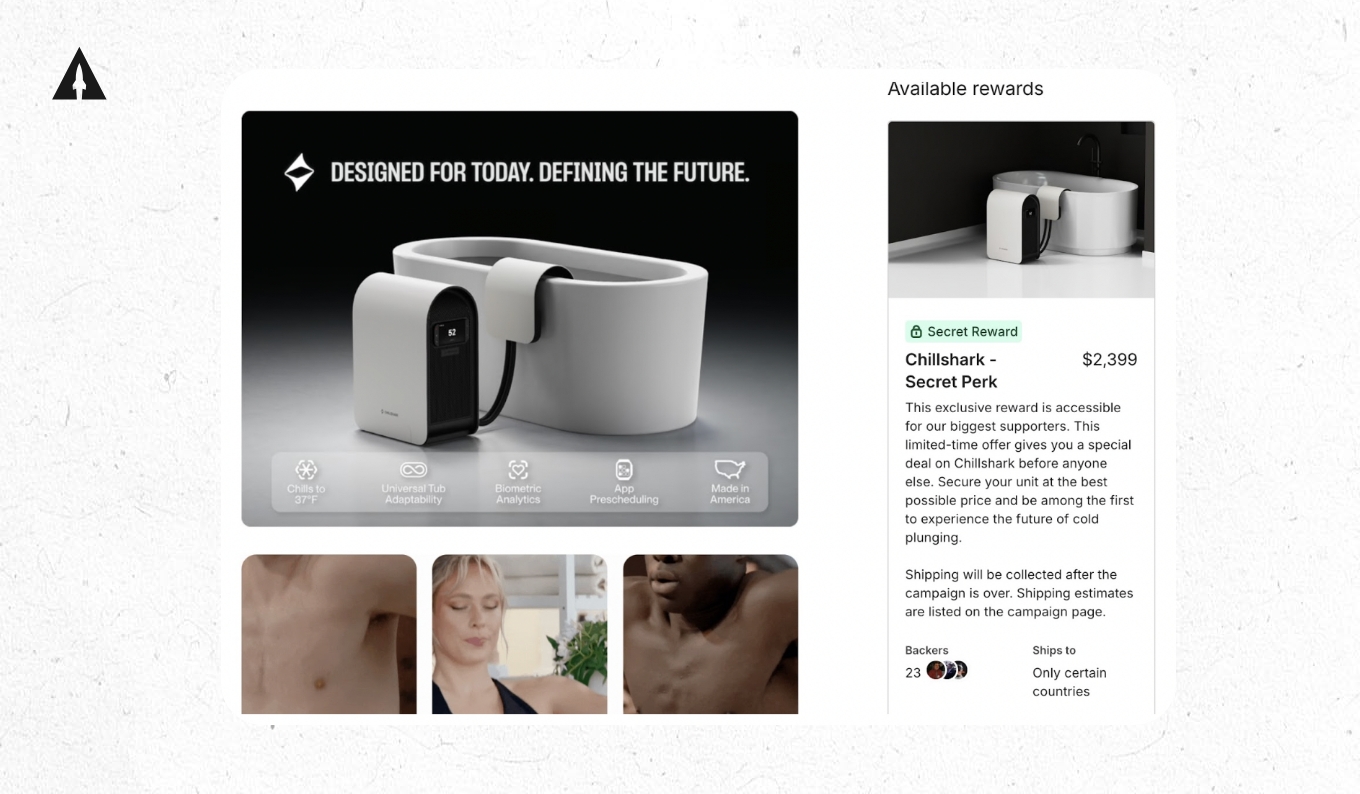
The beauty of Secret Rewards lies in their flexibility. You can create different tiers of exclusivity, offer time-limited deals, or provide genuinely unique configurations only available to select audiences.
4. Get the best out of Kickbooster
Kickbooster amplifies your reach by turning your existing backers into active promoters through a cashback referral system.
The platform seamlessly integrates with your Kickstarter account, creating a straightforward sign-up process for potential affiliates.
You control the economics by setting the cashback percentage you’re willing to provide for successful referrals. For instance, with a 25% rate, someone who refers a friend who pledges $100 would earn $25—with Kickbooster handling all tracking and payments automatically.
Beyond your personal network, Kickbooster maintains its own marketplace of active affiliates. By adding your campaign to their marketplace, you gain access to their network of professional promoters at no upfront cost—you only pay when they deliver actual backers.
The most successful campaigns typically offer competitive but sustainable rates—usually between 10-25% depending on margin structure—striking the right balance between incentivizing promoters and maintaining campaign profitability.
5. Go after nano and micro influencers in your niche
When it comes to influencer marketing for Kickstarter, bigger isn’t better.
Nano influencers (1,000-10,000 followers) and micro influencers (10,000-50,000 followers) in your specific niche consistently outperform celebrities with massive but generic followings.
Focus on quality over quantity by identifying creators whose audiences perfectly align with your product’s target market. These smaller influencers typically have significantly higher engagement rates and more trusted relationships with their followers.
The approach that works isn’t transactional but relational. Rather than treating influencers as paid advertising channels, invest time in building genuine connections.
Send them your product well before launch, get their honest feedback, and involve them in your development journey.
When the relationship is authentic, their eventual promotion feels like a sincere recommendation rather than a paid placement—dramatically increasing conversion rates and bringing in backers who are genuinely excited about your product.
6. Advertise on Meta
For most successful Kickstarter campaigns, Meta advertising (Facebook and Instagram) represents the single largest source of backer acquisition.
Despite rising costs and negative public perception, these platforms still offer unmatched scale and targeting capabilities.
The most effective approach involves a two-phase strategy: pre-launch ads focused on building your email list and reservation funnel, followed by conversion-oriented ads during the live campaign. This creates a seamless funnel that nurtures prospects through their journey from awareness to backing.
Our client Shuffle Dungeons demonstrates this approach perfectly. They invested $11,371.67 in Meta ads during pre-launch, collecting 4,785 emails and converting 933 of those into $1 VIPs. They generated $40,395 directly from this email list (a 3.55x ROI). Having this strong foundation helped them raise $214,955 in total on Kickstarter.
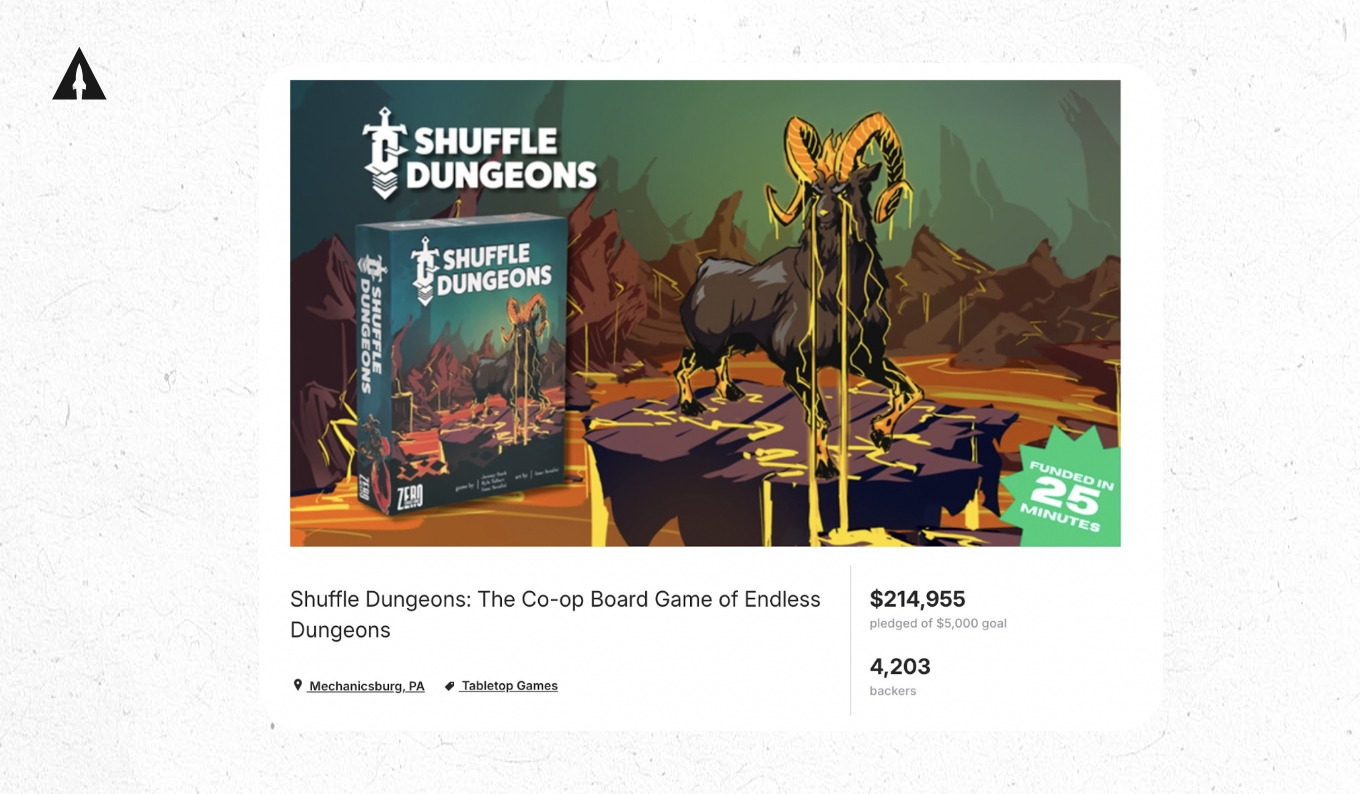
While the platform and creative strategies matter, what truly separates successful campaigns is rapid testing and optimization.
The most effective approach involves testing multiple creative concepts, audiences, and messaging angles in small batches, then quickly scaling what works while cutting what doesn’t.
7. Use performance marketing agencies
Once your campaign is live, consider leveraging performance marketing agencies that specialize in crowdfunding.
These partners work on a performance basis—they only get paid when they deliver actual backers to your campaign.
The primary advantage here is alignment of incentives. Since these agencies only earn when you do, they’re motivated to focus exclusively on approaches that generate real backing rather than vanity metrics like impressions or clicks.
Some of the most consistently effective partners in this space include Jellop, Kickstarter’s own Performance Marketing Team, and BackerKit. Each has slightly different specialties and approaches, so research which best aligns with your product category and target audience.
Before engaging any agency, ask about their minimum required ad spend, commission structures, and experience specifically with products in your category.
The best partnerships are those where economics work for both parties and the agency has proven success with similar campaigns.
8. Add some Kickstarter Add-ons
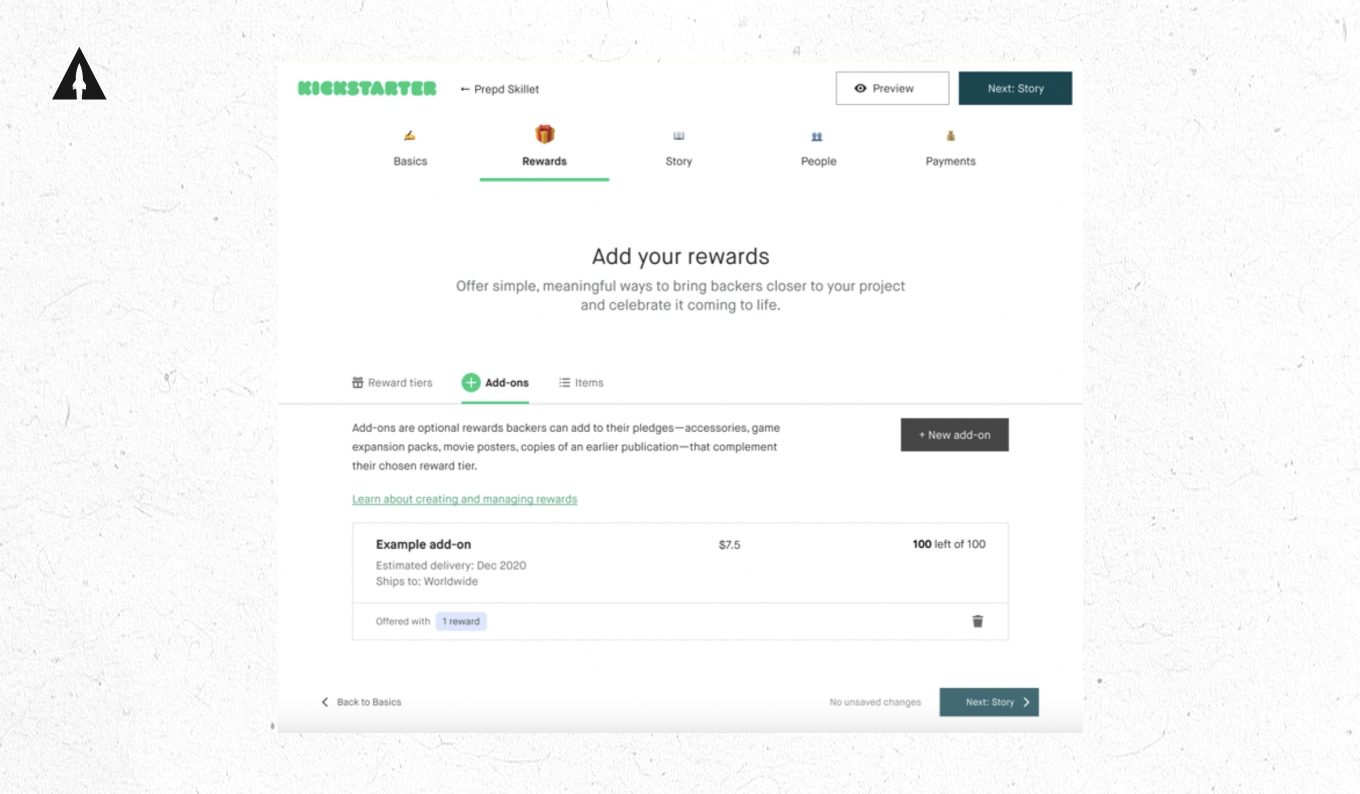
While add-ons won’t necessarily increase your backer count, they significantly boost your average pledge amount by functioning as effective upsells within your campaign structure.
Kickstarter’s add-on feature allows backers to enhance their pledge with additional items after selecting your main reward. This creates natural opportunities to increase order value through complementary products.
The most effective add-ons fall into three categories: logical accessories that enhance the core product, quantity options for buyers purchasing for groups, or exclusive items only available during the campaign.
Each serves a different segment of your backer base.
When implementing add-ons, focus on items with strong margins that don’t significantly complicate fulfillment.
Remember that each additional SKU adds complexity to your manufacturing and shipping processes—the financial upside needs to justify this added complexity.
9. Build an organic social media community
While paid acquisition drives immediate results, building an organic social presence creates sustainable momentum for your campaign.
The platform you choose should align with where your target audience naturally spends their time.
Most successful campaigns focus their organic efforts on TikTok, Instagram, or YouTube, depending on product category and audience demographics. Rather than spreading yourself thin across all platforms, select the one where you feel most comfortable creating consistent content.
The content that performs best isn’t polished marketing material but authentic behind-the-scenes glimpses into your journey.
Show the actual process, share genuine challenges, and let your personality shine through—this builds connection far more effectively than professionally produced content ever could.
Remember that organic traction takes time. Start building your presence months before launch, focusing on consistent posting and community engagement rather than follower count.
A smaller, engaged community will convert far better than a larger, passive one.
10. Cross-promote with other creators
Cross-promotion with other live Kickstarter campaigns creates mutually beneficial exposure at zero financial cost.
The most effective approach involves featuring each other in campaign updates, which automatically notify all existing backers via email.
The key to successful cross-promotion lies in finding campaigns with audience overlap but no direct competition. For instance, a board game might partner with a gaming accessory, or a tech product might align with a complementary gadget.
When reaching out to potential partners, focus on campaigns in a similar funding range with comparable backer counts. This ensures roughly equal value exchange and makes the partnership appealing to both parties.
The most effective cross-promotions go beyond mere mentions. Consider offering special bundle deals, exclusive combined offers, or joint Q&A sessions that provide genuine value to both backer communities while introducing each project to new potential supporters.
11. Market your product face-to-face
In our digital age, the power of physical presence is often overlooked.
Getting out and demonstrating your product in person creates connections and conversions that digital marketing alone cannot match.
Identify the trade shows and conventions that attract your specific target audience. For board games, events like GenCon, Pax Unplugged, or SPIEL provide ideal venues. Tech products might find CES or similar industry events more appropriate.
Our clients at Base Case exemplify this approach. We first met them at CES where they were showcasing their product.
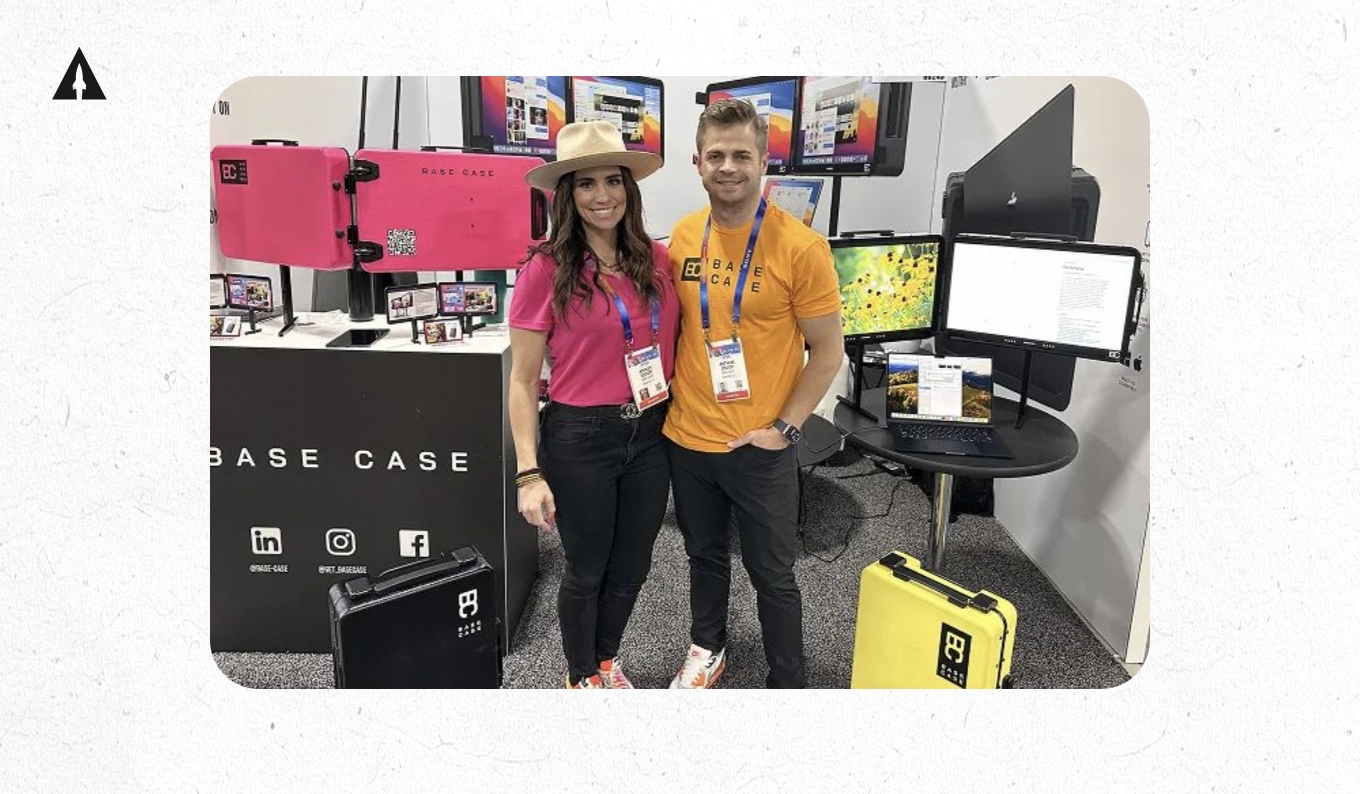
Those in-person demonstrations led to valuable B2B relationships that ultimately contributed to their $509,005 Indiegogo campaign.
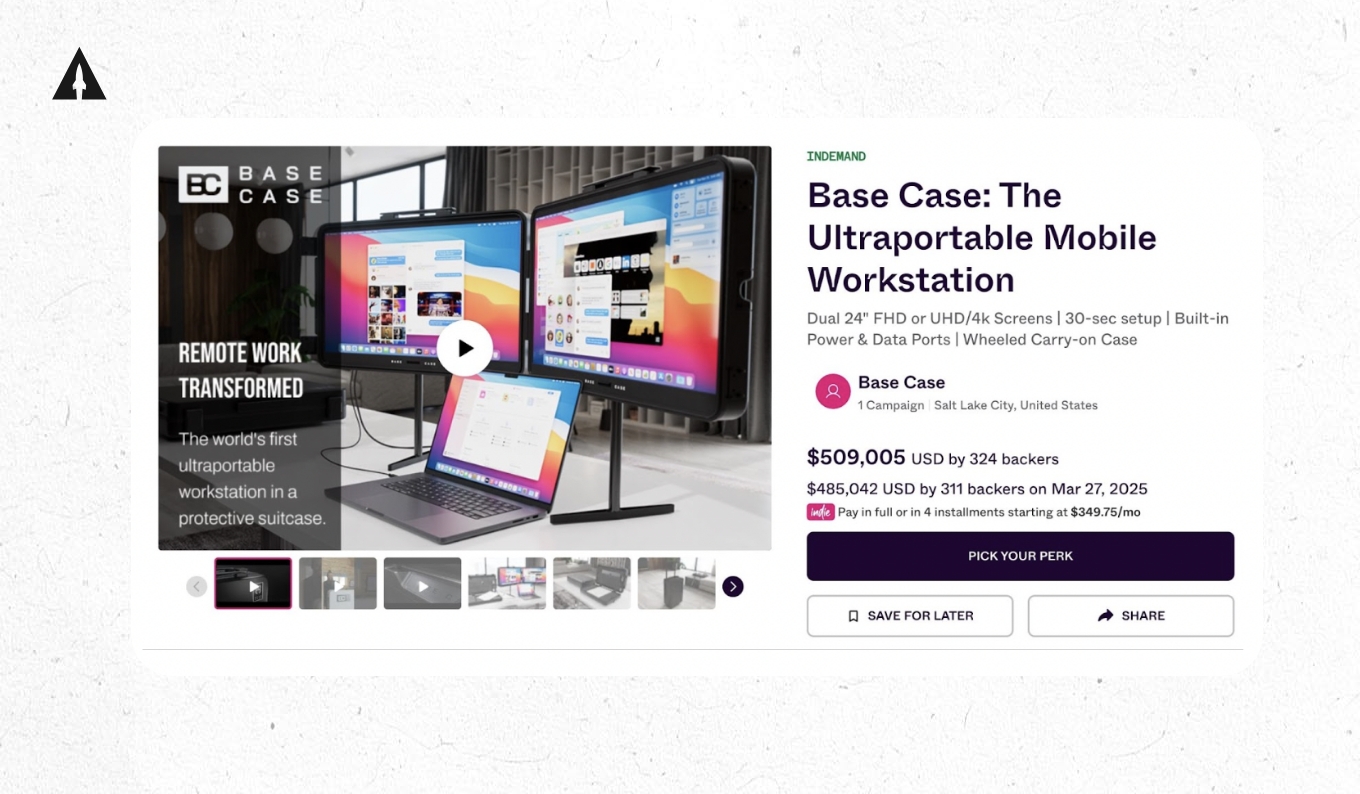
Beyond formal events, consider local meetups, relevant community gatherings, or even organized demo days in appropriate retail locations.
The personal connection formed when someone experiences your product firsthand creates a level of trust and enthusiasm that’s difficult to replicate through screens alone.
12. Create a compelling campaign video
Video production standards have evolved, but effectiveness still trumps production value.
This is an area where I see too many first-time creators overspend without corresponding returns.
Your campaign video should focus on clearly demonstrating product benefits rather than telling your company’s origin story. While your journey might be fascinating to you, backers primarily want to understand what your product will do for them.
Keep your budget under $15,000 by focusing on smart production choices. Voice-overs and stock footage can significantly reduce costs while maintaining quality.
Remember that a clear, straightforward presentation of your product solving real problems will outperform cinematic visuals with weak messaging every time.
Most critically, front-load essential information in the first 30 seconds. Viewer drop-off increases dramatically after this point, so ensure your unique value proposition and core benefits are clearly established right from the start.
13. Choose great product images
Your campaign’s visual assets do much of the heavy lifting in conveying product value, with three distinct types of images serving different purposes in your presentation.
Studio photos provide those professional “glamour shots” that showcase your product from multiple angles against clean backdrops. These communicate quality and attention to detail, establishing credibility with potential backers.
Location photos show your product in its intended environment, helping backers visualize how it fits into their lives. For instance, a kitchen gadget shown in an actual kitchen or a backpack displayed in outdoor settings creates context that studio shots alone cannot provide.
Action photos and GIFs demonstrate functionality in motion, highlighting key features and benefits through visual demonstration rather than written explanation.
These dynamic visuals are particularly effective for products with moving parts or interactive elements.
The most successful campaigns maintain visual consistency across all three types while ensuring each image communicates a specific aspect of your product’s value proposition rather than merely looking attractive.
14. Create enticing rewards
Think of your rewards as the pricing options on your campaign page. And creating good rewards will directly impact how much you raise. My two favorite strategies for rewards are:
- Discount Stacking
This is where you have multiple rewards with the same product but at different price points of varying discounts.
For example, look at how our client, Desk Nest, did this for their campaign that raised $468,628 on Kickstarter. They “stacked” their discounts at $70, $58, and $54 off to create urgency for backers to get the best deal before it ran out.
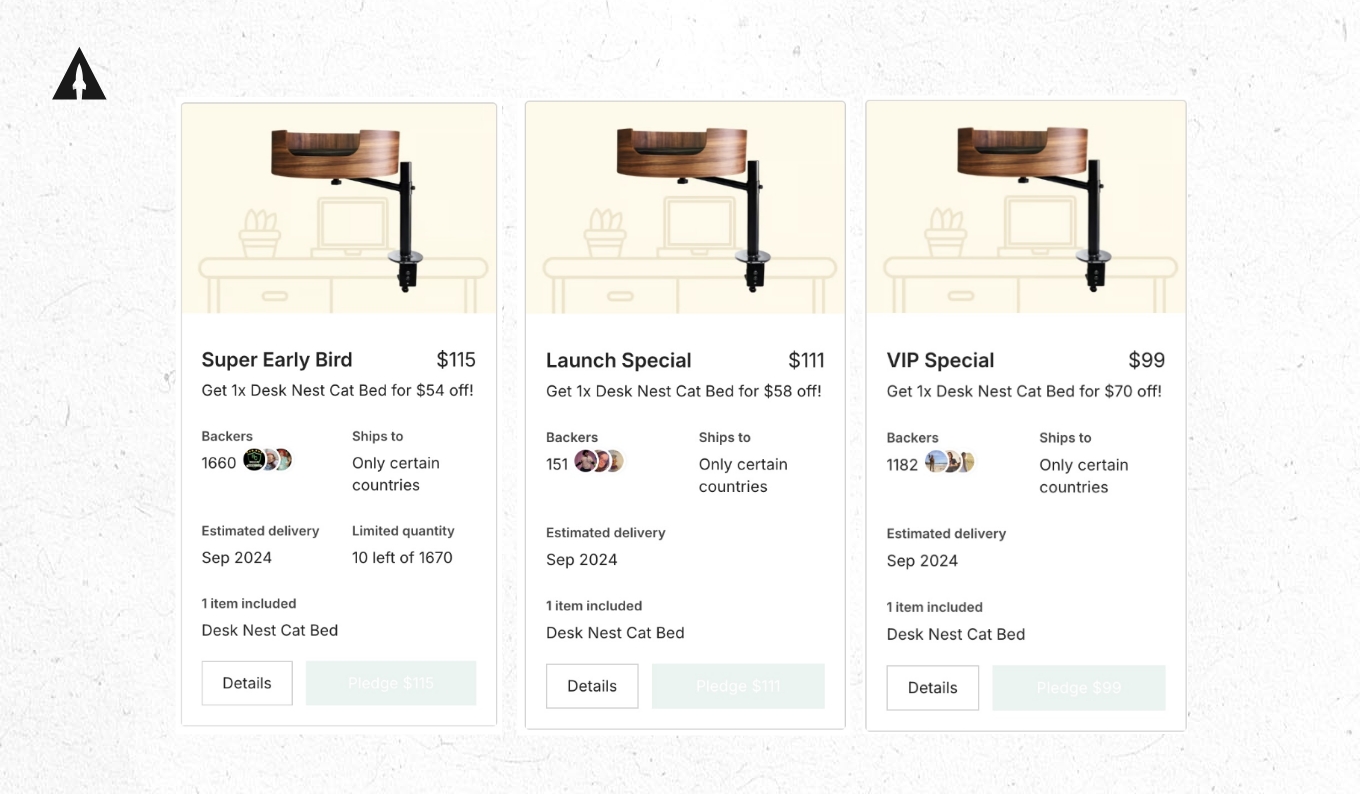
- Value Stacking
This is where your rewards are bundles of products that increase in value as the price goes up.
For example, check out how our client Peaks did this and went on to raise $198,354 on Kickstarter. They had 3 different “value stacks” for $49, $69, and $89. Each reward included more items and more value.

Whichever strategy you choose, just make sure to keep things simple. Too many options can stop potential backers from backing your project at all.
15. Use Backer Newsletters
Established backer newsletters maintain communities of proven crowdfunding supporters who actively seek new projects to back.
Getting featured in these newsletters can drive significant qualified traffic to your campaign.
While numerous newsletters exist, only a handful consistently deliver meaningful results. In our experience, the most reliable performers include First Backer, BackerMany, and Pledge Box’s newsletter.
Each maintains an audience of active crowdfunding participants who have demonstrated willingness to back multiple projects.
When approaching newsletters, timing matters significantly. Most perform best when your campaign already has momentum—typically after you’ve reached your goal.
This social proof increases conversion rates from their traffic and makes your campaign more attractive for feature consideration.
Prepare campaign-specific landing pages or special offers for newsletter audiences to track performance and potentially offer exclusive incentives.
This allows you to measure ROI accurately while creating additional conversion incentives for these pre-qualified prospects.
16. Tap into Kickstarter’s community
Kickstarter’s internal platform traffic represents a massive opportunity, with millions of monthly visitors actively looking for projects to back.
Securing visibility within this ecosystem can drive substantial free traffic to your campaign.
The platform’s algorithm heavily weights popularity and momentum when determining which projects receive featured placement. This creates a virtuous cycle: the more backers you bring through external channels, the more visibility Kickstarter gives you, which then brings additional backers without additional marketing spend.
Our client Aspens demonstrates this effect perfectly. Of their $506,153 total raise, $159,218 (31.46%) came directly from Kickstarter’s internal traffic.
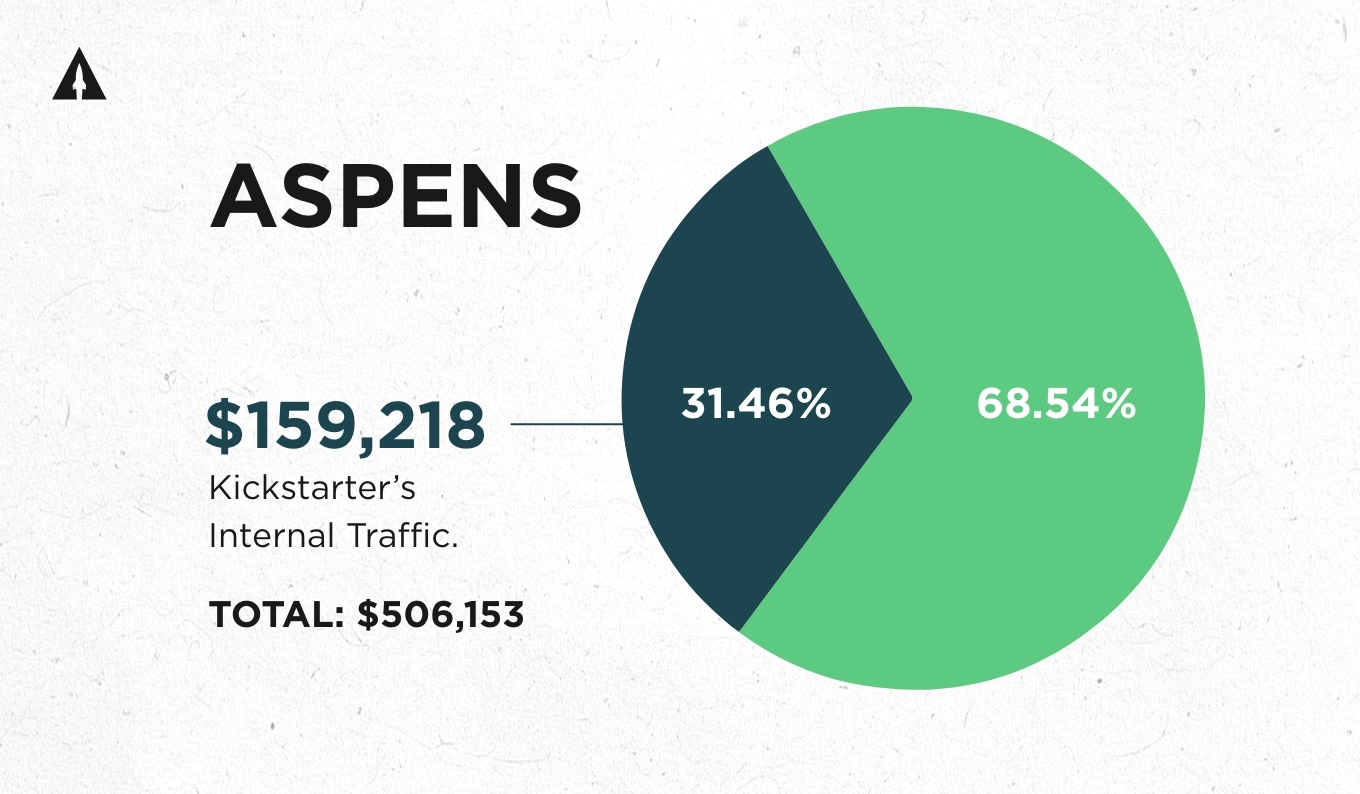
Similarly, XNote raised $259,394 with $51,830 (19.98%) coming from Kickstarter’s platform traffic.
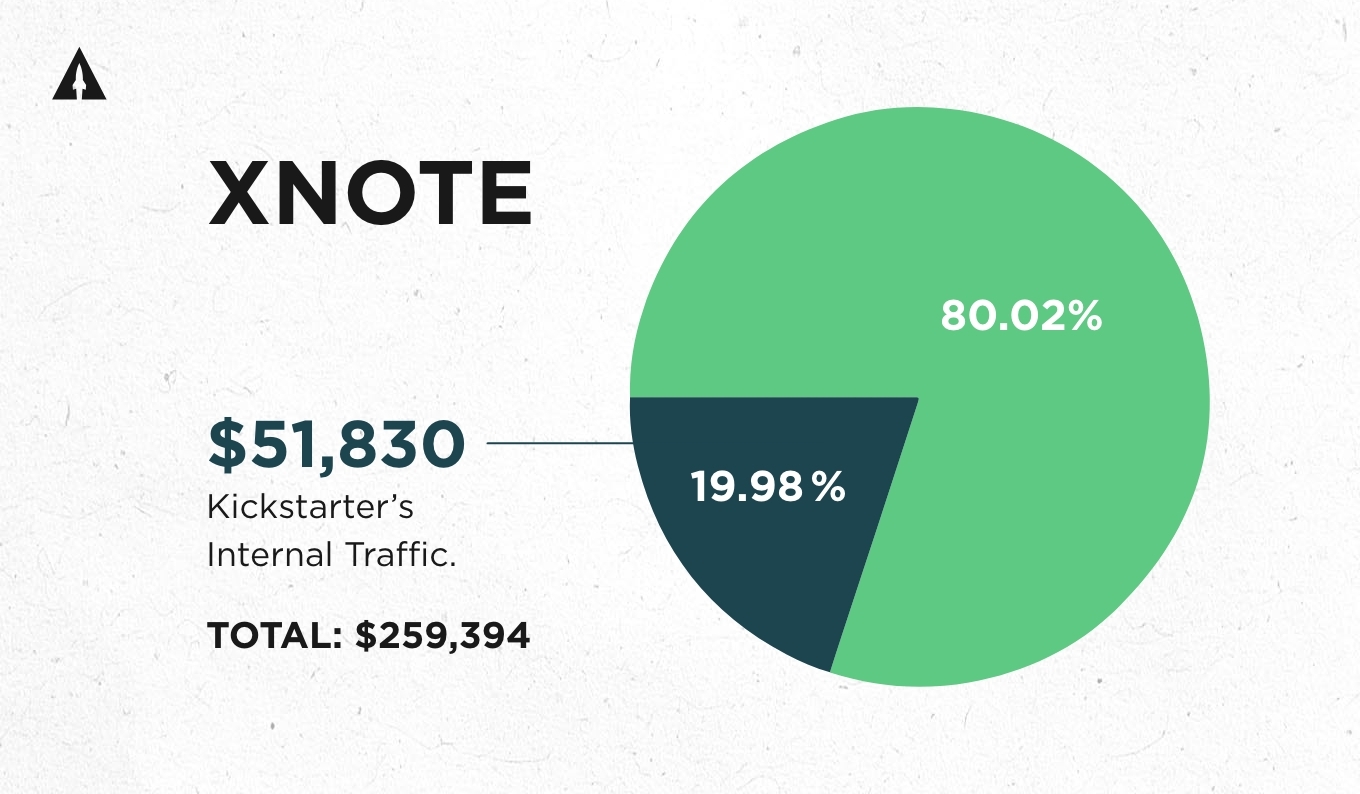
To maximize this effect, focus on creating strong early momentum through your pre-launch list, driving substantial backing in the first 24-48 hours.
This initial surge signals to Kickstarter’s algorithm that your project resonates with backers, increasing the likelihood of featured placement throughout your campaign.
17. Use Late Pledge
Kickstarter’s Late Pledge feature extends your campaign’s effective lifespan by allowing you to continue accepting pledges after your official campaign end date.
This creates valuable flexibility in your marketing timeline.
This option is particularly valuable when your campaign receives media coverage or social momentum near its conclusion. Rather than losing potential backers who discover you too late, Late Pledge captures this interest and converts it into actual backing.
Late Pledge also provides a natural transition period between your crowdfunding phase and regular e-commerce operations. This allows you to maintain special pricing or exclusive offers while preparing your permanent sales channels.
The most effective approach treats Late Pledge as a distinct campaign phase with its own marketing strategy rather than merely an extension of your main campaign.
Create specific messaging highlighting the limited-time opportunity to still get in at Kickstarter pricing before regular retail availability.
Final Thoughts
The path to Kickstarter success isn’t mysterious or based on luck—it’s built on strategic preparation and execution.
The 17 strategies I’ve shared have consistently delivered results across hundreds of LaunchBoom campaigns in the last year alone.
What separates the campaigns that raise six and seven figures from those that struggle isn’t usually the product itself. It’s if they use these proven approaches, particularly the emphasis on pre-launch buildup and advertising.
If you’re planning your own Kickstarter journey, start with the foundation: build your email list, implement a $1 VIP strategy, and run ads through Meta.
These elements create the momentum that everything else builds upon.
And remember—you don’t have to do this alone. If you’re looking for support with your campaign, our team at LaunchBoom has helped creators raise over $175 million using these exact strategies.
Reach out here and let’s discuss how we can help make your Kickstarter campaign a success.
How To Get Backers On Kickstarter: Frequently Asked Questions
Where do Kickstarter backers come from?
Kickstarter backers typically come from multiple sources, with the distribution varying by project.
For most successful campaigns, 40-60% come from external marketing efforts like Meta ads, email lists, and influencer partnerships.
Another 15-30% typically comes from Kickstarter’s internal traffic, while the remaining backers arrive through word-of-mouth, cross-promotion, and PR coverage.
Building a strong pre-launch community consistently proves to be the most reliable source of initial backing.
Do you have to pay back Kickstarter backers?
No, you don’t pay back Kickstarter backers in the traditional sense.
Unlike loans or investments, Kickstarter operates on a rewards-based model where backers receive the product or specified rewards in exchange for their pledge.
However, you do have a responsibility to fulfill the rewards you’ve promised. Failure to deliver as described can result in refund requests, negative reputation impact, and potentially even legal issues if backers believe you’ve acted in bad faith.
What do Kickstarter backers get in return?
Kickstarter backers receive the specific rewards outlined in your campaign’s reward tiers.
Typically, this includes the product itself (often at below-retail pricing), exclusive variants or features only available to backers, behind-the-scenes access during development, recognition in the product or packaging, and sometimes additional merchandise or add-ons.
The value proposition centers on early access, exclusive features, better pricing, and the satisfaction of helping bring a new creation to life.
The most successful campaigns offer clear, tangible value that exceeds what backers could get by simply waiting for retail release.


